Grow Your Own Herbal Hay for Livestock
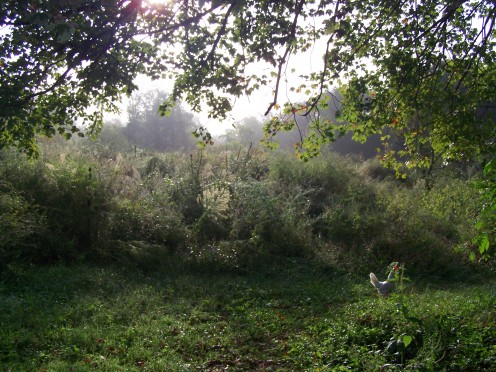
I dry my hay by flipping it once, or twice a day with a rake. I allow it to sit out for a few days until it is dry--but not crispy. After properly dried in the sun, I stack it loosely in an airy shed.
For feeding my goats I pack a good amount into a wire dog kennel so they can just reach their noses in and pull out a mouthful. This prevents waste and they enjoy clean, organic herbal hay!
Any plant that is not toxic when dried can be fed to your livestock as an herbal hay. It is up to you to find species of plants your species of livestock can safely eat.
Watch the amounts of each plant you feed. Researching of the possible toxic accumulative nature of each plant is essential when trying out a new species.
Growing your own herbal hay is pretty simple. You can add and herb you wish your livestock and pets to eat.
One of the great things about herbal hay is how beautiful it looks. When cut in bloom and allowed to dry, the blossoms add unusual color and texture to your finished product.
Herbal hay also offers your animals nutrients they will not find in plain, grass hays. One of the most common ways to feed herbal hay is offering it with an animal's regular grass, peanut or alfalfa hay.
These are just a few things you can add to your herbal hay. Research for more plants that work well as hay supplementation.
I will post another Hub with more herbal hay species.
© Copyright Notice ©
My photographs are mine, taken by me, with my camera. You may use them for personal reasons (desktop backgrounds, personal websites or you can print them for personal use.)
If you choose to use them on websites I require a link back to my HubPages. You may link to my profile or to one of my Hubs.
You may not use them without my permission or for profit.
I sell my art and if you are interested in purchasing it send me a message.
ALL of my articles are MINE and you may NOT use them for anything but reading on my page.
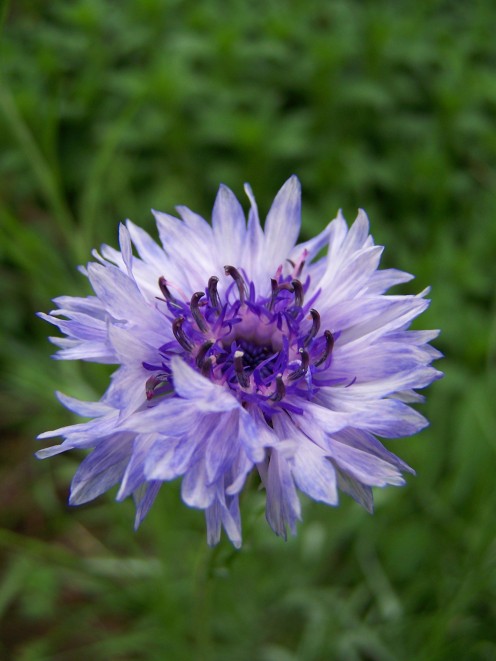
Remember to store your hair in a place out of the sun and rain. Hay keeps its nutrients better when kept dry and out of the light.
Bachelor's Buttons (Centaurea cyanus):
Annual bachelor's buttons (wild or cultivated) grow quickly from seed. Bulk seed is easily purchased online through seed retailers.
One of the best things about growing bachelor's buttons is that it reseeds itself, as long as you allow some to continue to grow and set seed. Try and plant at least double the seeds you think you need.
Effects of Bachelor's Buttons:
Chorea, indigestion, nerves, poor appetite, jaundice, and paralysis. Can be slightly laxative, especially if fed with seed on.
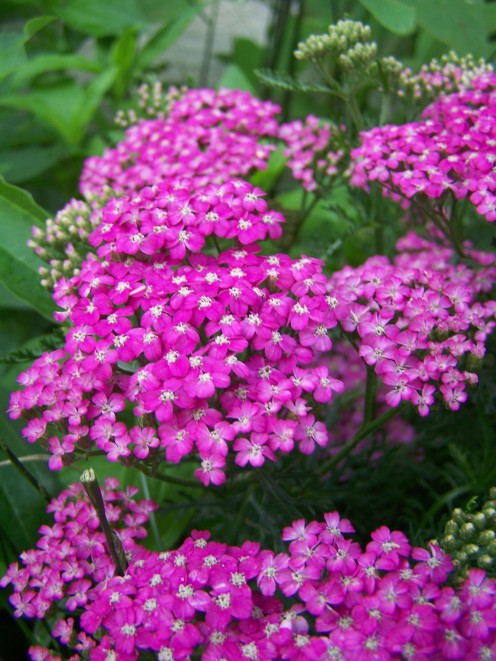
Yarrow (Achillea millefolium):
Plain, white field yarrow and its colored friends make good additions to your herbal hay. Try a small amount mixed into your regular herbal hay.
Effects of Yarrow:
Historically, yarrow has been used in livestock in treatment for urinary problems, irregularities during menstrual flow, fevers, venereal diseases, bleeding wounds, catarrh, and as a de-wormer and pest insect repellent.
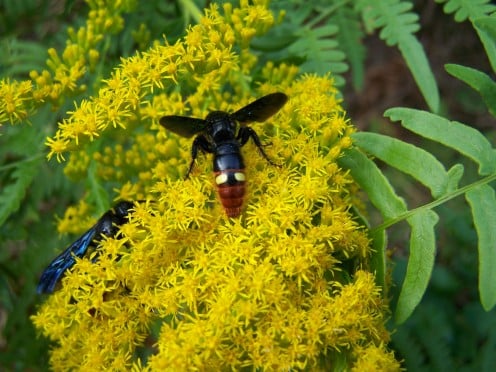
Goldenrod (Solidago):
The weed so many people hate. Goldenrod is a good addition to your herbal hay. Wait for it to begin blooming and then cut it down and dry it. Dry the flower heads with the stems and leaves. It may be hard to get even drying because of the nature of goldenrod's pollen. It is worth the effort though.
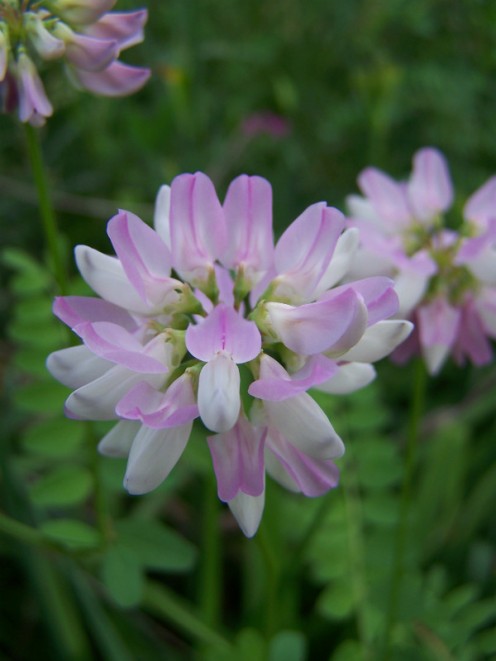
Crown Vetch (Coronilla varia):
One of the most beautiful of all legumes, crown vetch is a good addition to an herbal hay patch. Harvest and dry it much like you would alfalfa.
Give crown vetch ample room to spread as it can choke out other plants.
Grow this as a hay or use it to fix nitrogen in the soil. My goats adore crown vetch!
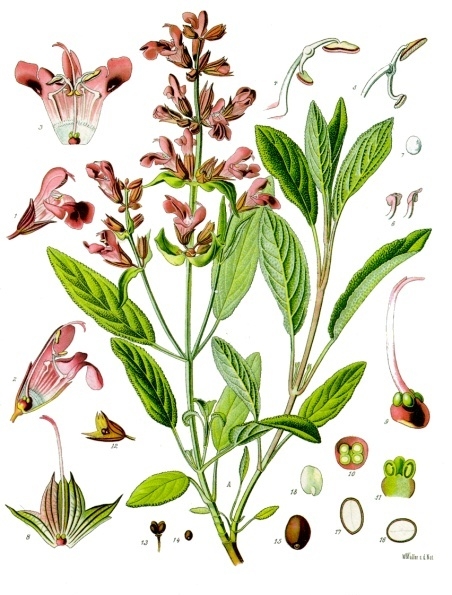
Sage (Salvia officinalis):
Sage adds a wonderful aroma to hay. It also repels some insects. Sage is a wonderful herb for feeding dairy animals and they usually eat it with relish.
Effects of Sage:
For treatment of nervousness, constipation, gastric problems, infections, paralysis, female reproductive issues, increases milk yield and in treatment of fever.
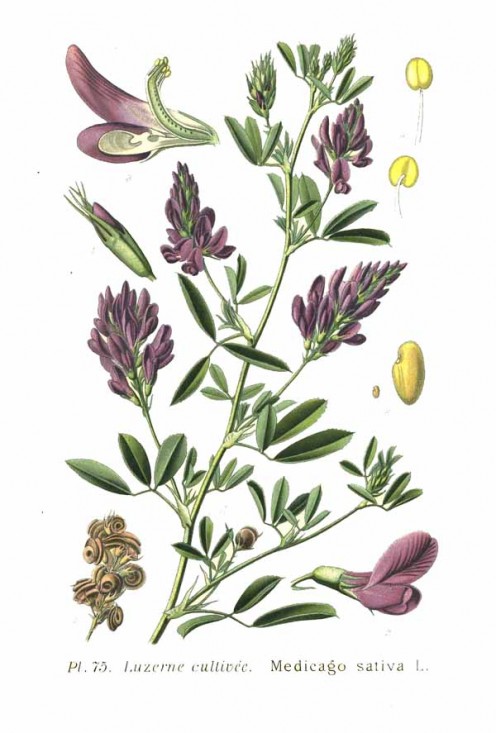
Alfalfa (Medicago sativa):
This is something you should grow. It is a wonderful plant to add healthful bulk to not only your haystacks, but your animals as well. I haven't met a veggie eating animal that doesn't like a bit of alfalfa in their diet.
When drying alfalfa, you have to time it just right of the leaves will shatter. Shattered leaves means they break apart and do not stay attached to the stalks. Too wet and it will mold.
Some animals may become excitable on large amounts of alfalfa.
Sorry, I have no picture for this but it is easy enough to Google one!
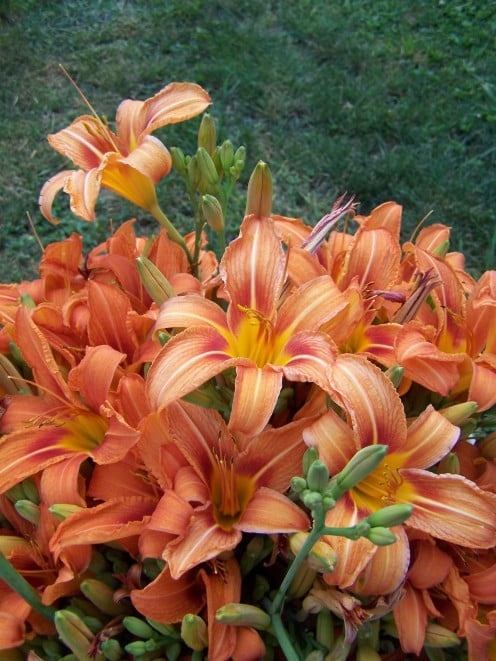
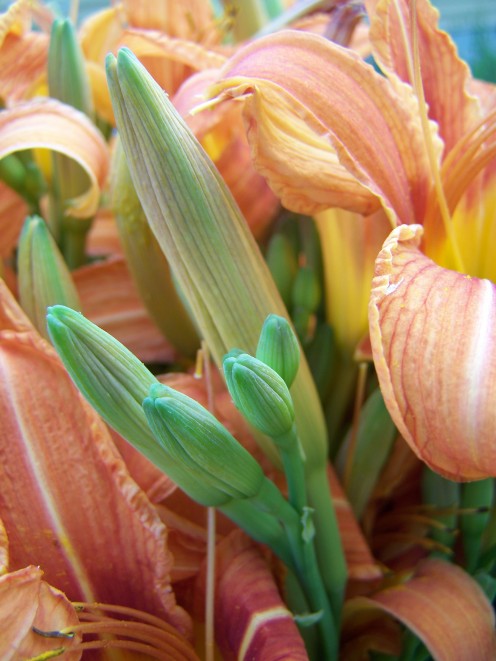
Daylilies (Hemerocallis):
Livestock love to feed on daylily plants. You can turn their foliage and blossoms into herbal hay. Simple chop the leaves and flower stalks off the plant. Lay the leaves out evenly so they dry. I lay the blossoms out in a single layer and allow them to dry for a few days. I turn them daily to ensure even drying. You can leave the flower attached to the stalks or pick them off for drying.







